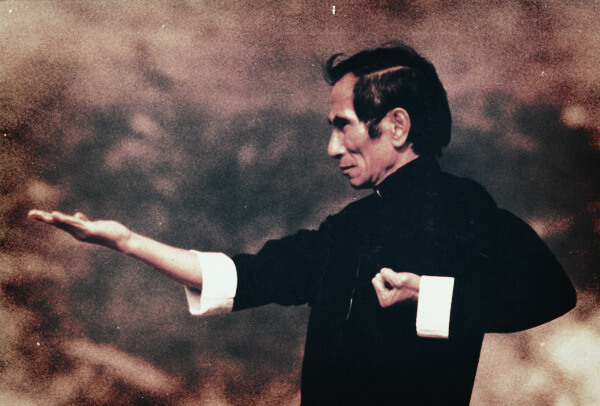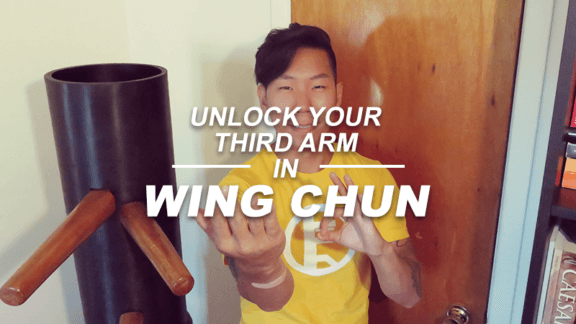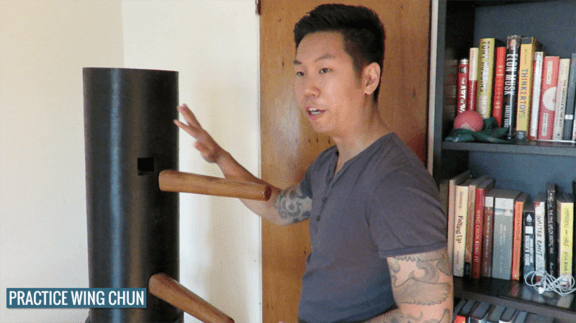Let’s Talk About Sil Lim Tao
Sil Lim Tao or “Little Idea” is the first form of the Wing Chun system. The form covers the fundamentals of Wing Chun.

Many people may rush through forms to get to the next without understanding how important it is before moving on. I have to admit that I was one of those students and it wasn’t until I was learning Biu Tze did I realize how my training could have been more effective if I paid attention to my body when I was doing my previous forms.
Here’s a short video explaining my reasoning behind doing Sil Lim Tao slowly.
Basically, if you are new to Wing Chun, your body has not adapted yet so it’s harder to perform Wing Chun techniques. By doing the form slowly, you work out parts of your body that you have never worked out before because you hit the smaller muscles that aren’t normally triggered when exercising or doing things in your everyday life. These muscles are activated when you start your Wing Chun training. Similar to working out at the gym or at home, you don’t see results if you speed through the workout. Instead, you should take your time to put effort into maintaining good form to obtain better results.
So the next time you’re doing your form, pay attention to your body. If you feel tension in parts of your body as you’re doing your form, you’re exercising new muscles that will help you to improve your technique and form in Wing Chun!
Let’s Do Sil Lim Tao Together
I recorded this video on my phone because I wanted to capture my entire body doing the form. Since the sound quality wasn’t great, I mixed in some music. Let me know if it’s too distracting!
This is the first time I recorded myself doing my Sil Lim Tao form in a very long time. I was definitely nervous and slightly tensed.
I’m glad I took this chance to see how my form looks and definitely took notes on where I can improve. Here are the things I noticed:
- The Huen Sau close is too fast, I should do it slower to really work my forearms.
- My foot placement wasn’t aligned and I didn’t notice it while I was doing the form.
- After the meditative section of the form, I should maintain the same pace but instead I sped up.
- Each strike should be more clear and prominent. I sped through them.
Overall, I should slow down and focus more on each movement.
I hope you guys try recording yourselves doing the form as well. It’s a good way to spot your mistakes and improve your form!
Sil Lim Tao on the Wing Chun Dummy
Last week I asked you guys for ideas and suggestions for future Practice Wing Chun topics. David sent me an email asking about practicing open hand forms on the Wing Chun dummy so I decided to create a mini series that covers just that. I’m still accepting ideas and suggestions or questions. I will cover them all!
This week’s video suffered a bit of technical difficulties in the last half of the video. The camera moved and lost focus, and everything is a blur. But the audio is still informative so I have left the video as is. I plan to make up for it in Part 2 and review it again. But if you can’t wait and want it corrected now, let me know and I’ll make an addendum video.
But other than that, let me know if this video is useful for you and would like to see more videos like this.
And, if you’re already practicing your open hand forms on a dummy, what are your tips? Share them in the comments!
Section 2 is much more complex than section 1. It requires the form to be broken down into 9 smaller sections. This also makes it easier to apply the movements to the dummy. If you require more details for each section, let me know!
Almost all the sections in Part 3 can be done on the Wing Chun Dummy. If you’re training the Sil Lim Tao form, I think Part 1 and Part 3 are the easiest to work with because it doesn’t require readjusting the dummy’s position or striking a different part of the body.
I think Part 3 is very straight forward with the exception of three strikes: The Rib Strike, Fingers Down Palm Strike, and the Upper Palm Strike. I hope that the video is enough to demonstrate how it’s done but if not, please let me know and I will create another video to add on to it!
It was a lot of fun doing the Sil Lim Tao form with the Portable Wing Chun Dummy and I’m looking forward to hearing what you guys think about it. Also, let me know if you find this series useful!


